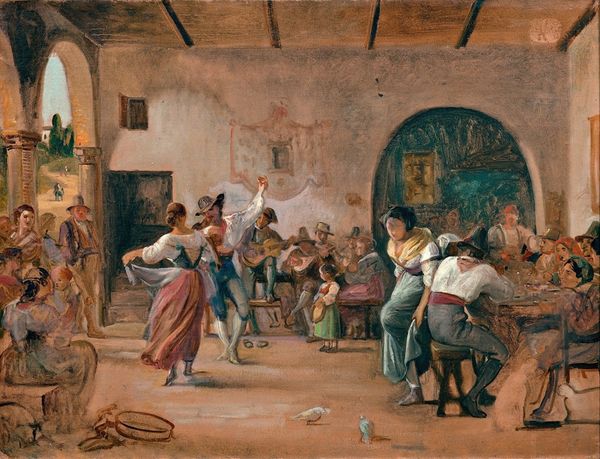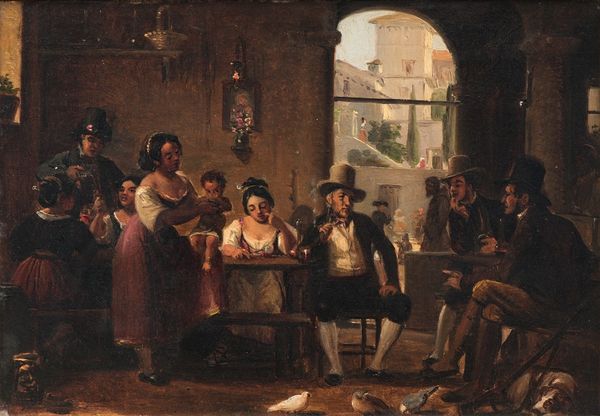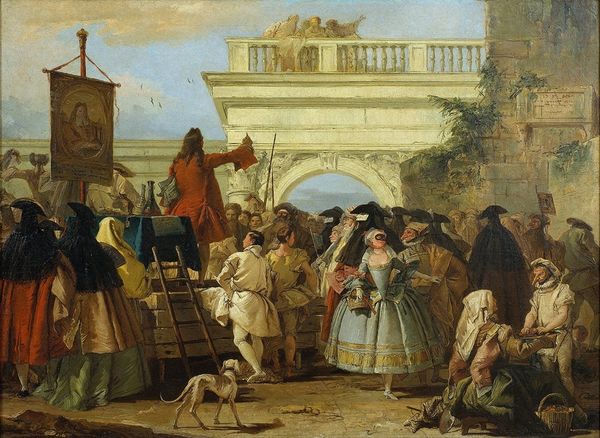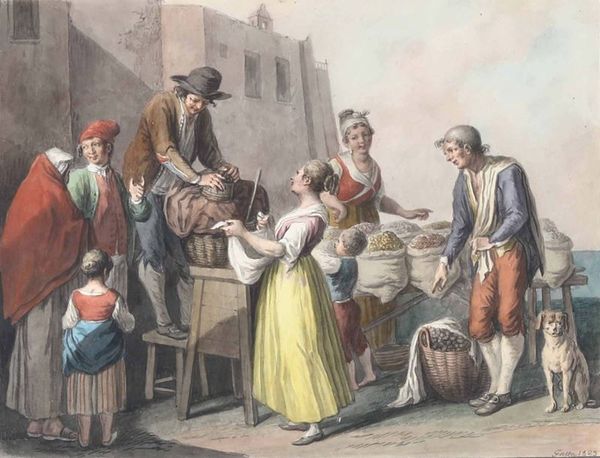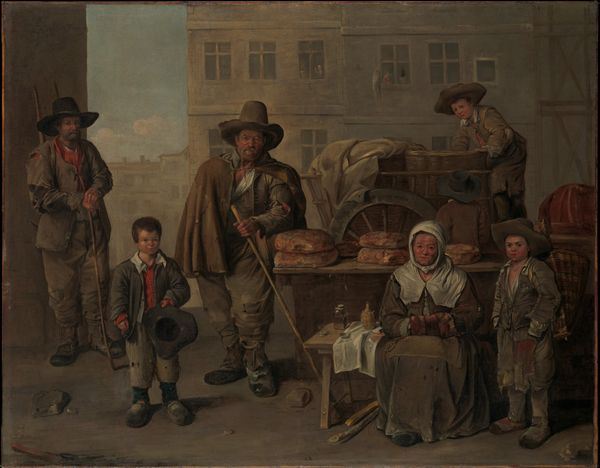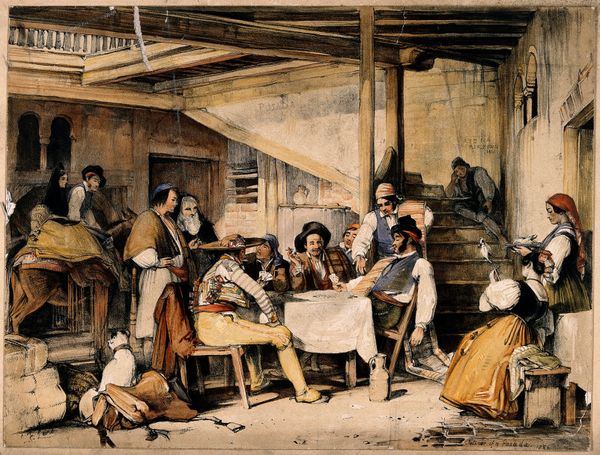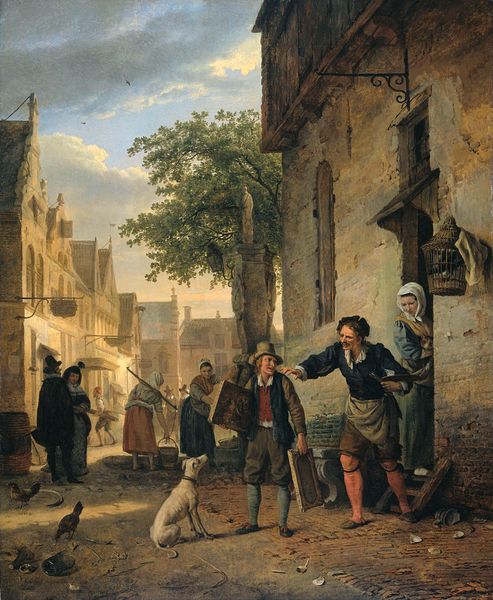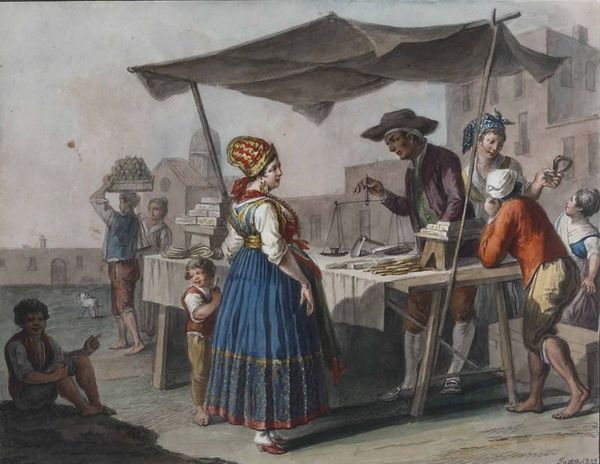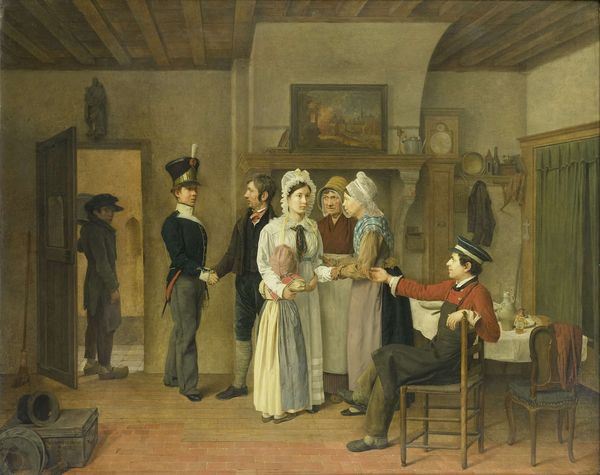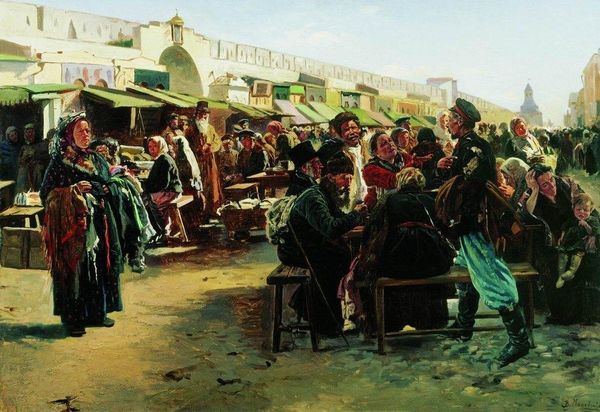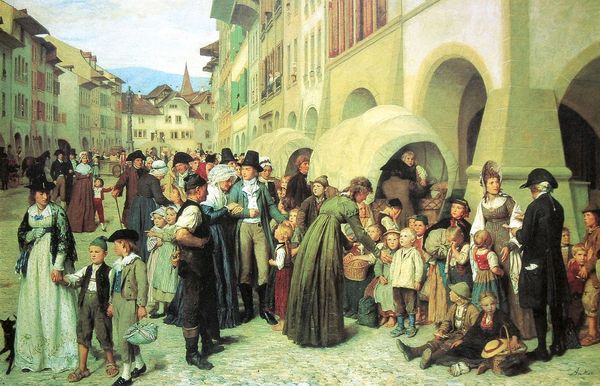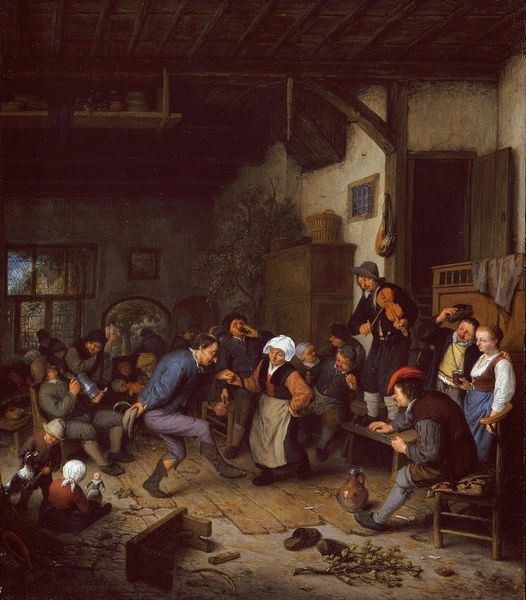
painting, oil-paint
#
figurative
#
painting
#
oil-paint
#
figuration
#
oil painting
#
romanticism
#
cityscape
#
genre-painting
#
academic-art
Copyright: Public Domain: Artvee
Editor: This is Wilhelm Marstrand's "A Charlatan Selling Blacking in the Piazza Barberini in Rome," painted sometime between 1839 and 1849, using oil paint. It's so busy, so full of different people...What can you tell me about it? Curator: Notice how the artist meticulously renders the textures of the clothing, from the charlatan's glossy waistcoat to the rough fabrics worn by the children. This acute attention to material detail highlights the socio-economic stratification present within the scene, wouldn't you agree? Consider the labor involved in producing those goods. Editor: So, not just a scene of daily life, but also a reflection on class? Curator: Exactly. Marstrand isn't merely depicting a marketplace, but a network of production and consumption. Who benefits from the charlatan's trade, and at what cost to those producing and consuming his wares? What kind of labour are we looking at here? And why 'blacking', of all things? Editor: Hmm, blacking... shoe polish. I hadn't thought of that, but it’s interesting. It points to ideas of upward mobility through appearances, of manufacturing or simulating status. Curator: Precisely! Think about the materiality of that 'blacking.' What raw materials were used, and who extracted them? Trace the journey of those ingredients, and you begin to unravel a complex web of colonial trade and exploitation underpinning even the most mundane of commodities. Editor: It gives a totally different context to just a genre painting. Seeing it as a map of production and social structure changes the way I see the piece, altogether. Curator: It invites a critical examination of how even seemingly innocent scenes are often deeply intertwined with economic realities and power structures, which should force a reassessment of all assumptions.
Comments
No comments
Be the first to comment and join the conversation on the ultimate creative platform.
